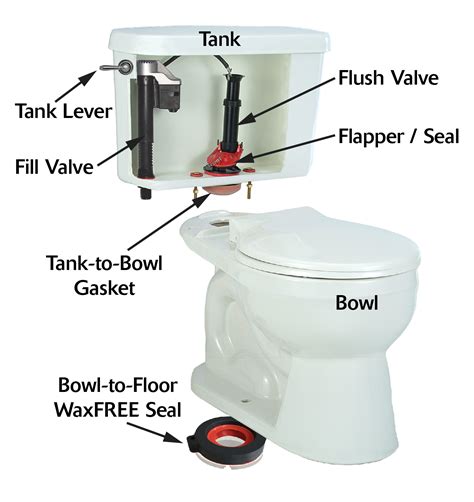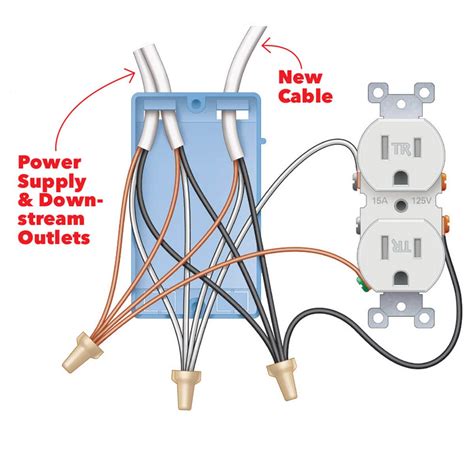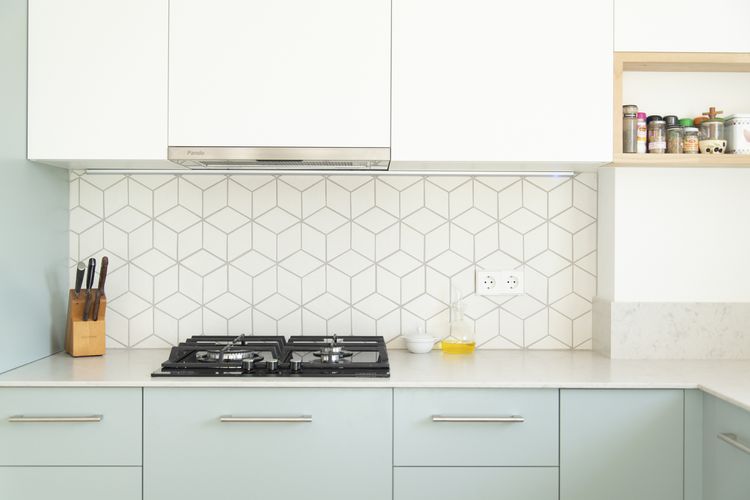
The Key Components of a Toilet Tank
Understanding the various parts of a toilet and how they function is essential for any homeowner. Here are the key components of a toilet tank:
Toilet Handle
The toilet handle is located on the front or side of the tank and is used to initiate the flushing action. When you press or lift the handle, it activates the flushing mechanism and allows water to flow into the toilet bowl.
Toilet Chain and Lift Wire
The toilet chain or lift wire connects the handle to the flapper or flap valve. When you flush the toilet, the chain lifts the flapper, allowing water to rush from the tank into the bowl.
Toilet Flapper or Flap Valve
The toilet flapper or flap valve is a rubber component that covers the flush valve opening at the bottom of the tank. When you flush the toilet, the flapper lifts, releasing water from the tank into the bowl to initiate the flush.
Toilet Fill Valve
The toilet fill valve, also known as the ballcock, is responsible for refilling the tank with water after a flush. It senses the water level in the tank and shuts off the water supply once the desired level is reached.
Toilet Float or Ballcock
The toilet float, connected to the fill valve, rises and falls with the water level in the tank. When the water level drops during a flush, the float lowers, allowing the fill valve to open and refill the tank. Once the water reaches the desired level, the float rises and shuts off the fill valve.
Toilet Overflow Tube
The toilet overflow tube is a vertical tube located near the center of the tank. It prevents the tank from overflowing by directing excess water into the toilet bowl if the fill valve malfunctions or the water level exceeds a certain point.
Toilet Water Supply Line and Valve
The toilet water supply line connects the toilet tank to the water supply. It is usually a flexible hose with a shut-off valve. The shut-off valve allows you to stop the water flow to the toilet for maintenance or repairs.
The Essential Components of a Toilet Bowl
In addition to the tank, the toilet bowl has its own set of crucial components:
Toilet Bowl
The toilet bowl is the part of the toilet that holds water and is responsible for receiving waste during flushing. It is typically made of porcelain or ceramic and is mounted on top of the floor flange.
Toilet Tank O-Ring Seal
The toilet tank O-ring seal creates a watertight connection between the tank and the bowl. If you notice water leaking from the tank onto the bowl, the O-ring seal may need to be replaced.
Toilet Wax or Silicone Seal
The toilet wax or silicone seal is located between the toilet flange and the base of the toilet bowl. It creates a watertight seal to prevent leaks between the bowl and the drainage pipe.
Toilet Floor Flange
The toilet floor flange is a pipe fitting that connects the toilet bowl to the drainage pipe in the floor. It provides stability and support for the toilet
and ensures a proper connection to the plumbing system.
FAQs (Frequently Asked Questions)
1. How do I fix a running toilet?
A running toilet is usually caused by a faulty flapper or a problem with the fill valve. To fix it, check the flapper for damage or misalignment and replace it if necessary. You can also adjust the water level in the tank or replace the fill valve if it’s not shutting off properly.
2. What should I do if my toilet is clogged?
If your toilet is clogged, you can try using a plunger to clear the blockage. Make sure there is enough water in the bowl to cover the plunger, then use a firm, up-and-down motion to create suction and dislodge the clog. If the plunger doesn’t work, you may need to use a toilet auger or call a professional plumber.
3. How often should I replace the components inside my toilet tank?
The lifespan of the components inside a toilet tank can vary, but on average, they may need to be replaced every 5-10 years. However, if you experience frequent issues like leaks, running water, or inefficient flushing, it’s best to inspect and replace the components as needed.
Now that you’re familiar with the different parts of a toilet and how they function, you’ll be better equipped to tackle common toilet issues. Remember, regular maintenance and timely repairs can help you keep your toilet in optimal working condition and avoid unnecessary plumbing headaches.






